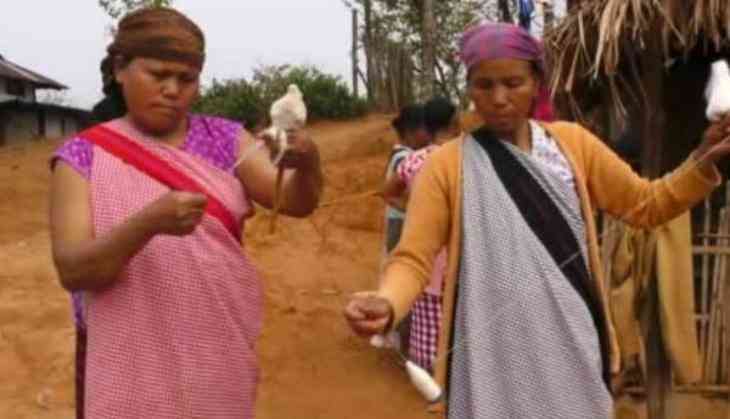
In a bid to promote Prime Minister Narendra Modi's ambitious initiative of 'Make in India' under the north east region textiles promotion scheme, villagers of Mawlynnong village of Meghalaya have catered the indigenous form of weaving and generate an alternative source of income.
Over the decades, sericulture and weaving in Meghalaya have played a pivotal role in the production of silk fabrics and hand woven fabrics of ethnic designs.
The two most important cottage and eco-friendly industries in the rural areas are safeguarding and exhibiting the rich cultural identity and heritage of the people.
These twin industries portray the cultural ethos and rich heritage of the native people. At present, Meghalaya has 12 seed farms, six for mulberry, three for Eri silk and two for Muga. At the same time, there are nine nurseries to rear planting materials in different districts of the state.
And one such cluster is Mawlynnong village in Ri-Bhoi District in east Khasi hills of Meghalaya under the North East Region Textiles Promotion Scheme and is growing slowly, perfecting their skills.
Situated 83 km from the capital city of Shillong, the over 100 households of Mawlynnong village mostly make a living from rearing silk worms and the area has a large number of weavers weaving their own yarns and converting them into fabrics in a traditional way and method.
'The intention of the of the scheme is to gather the people and form a cluster and a cooperative and register them so that they can work together and produce their product in uniformity and meet the market demands of the products,' said Weaving Inspector.
North East Region Textiles Promotion Scheme aims to provide a space for not less than 300 weavers and presently the center has over 60 weavers engaged in the traditional weaving.
For dyeing the fabrics, the workers, mostly the housewives, use natural resources like ginger, black rock, turmeric, radish leaves besides few other leaves.
In order to produce a quality dyed fabrics, the villagers use the traditional method of soaking the fabric in the grinded mixture and boiling it.
'Being the member of Mawlong United Committee, I can say proudly say that the scheme has helped us to improved and become an expertise and also know how eco-friendly the products are. We dye the fabrics using natural resources available in our area,' said a Weaver.
The Union Textiles Ministry has already urged the local weavers to register with the India Handloom Board so that they can connect directly with multinational companies.
Such cluster is not only shaping the lives of the villagers but also promotes the indigenous weaving method and boosts the economy of the state.
-ANI


